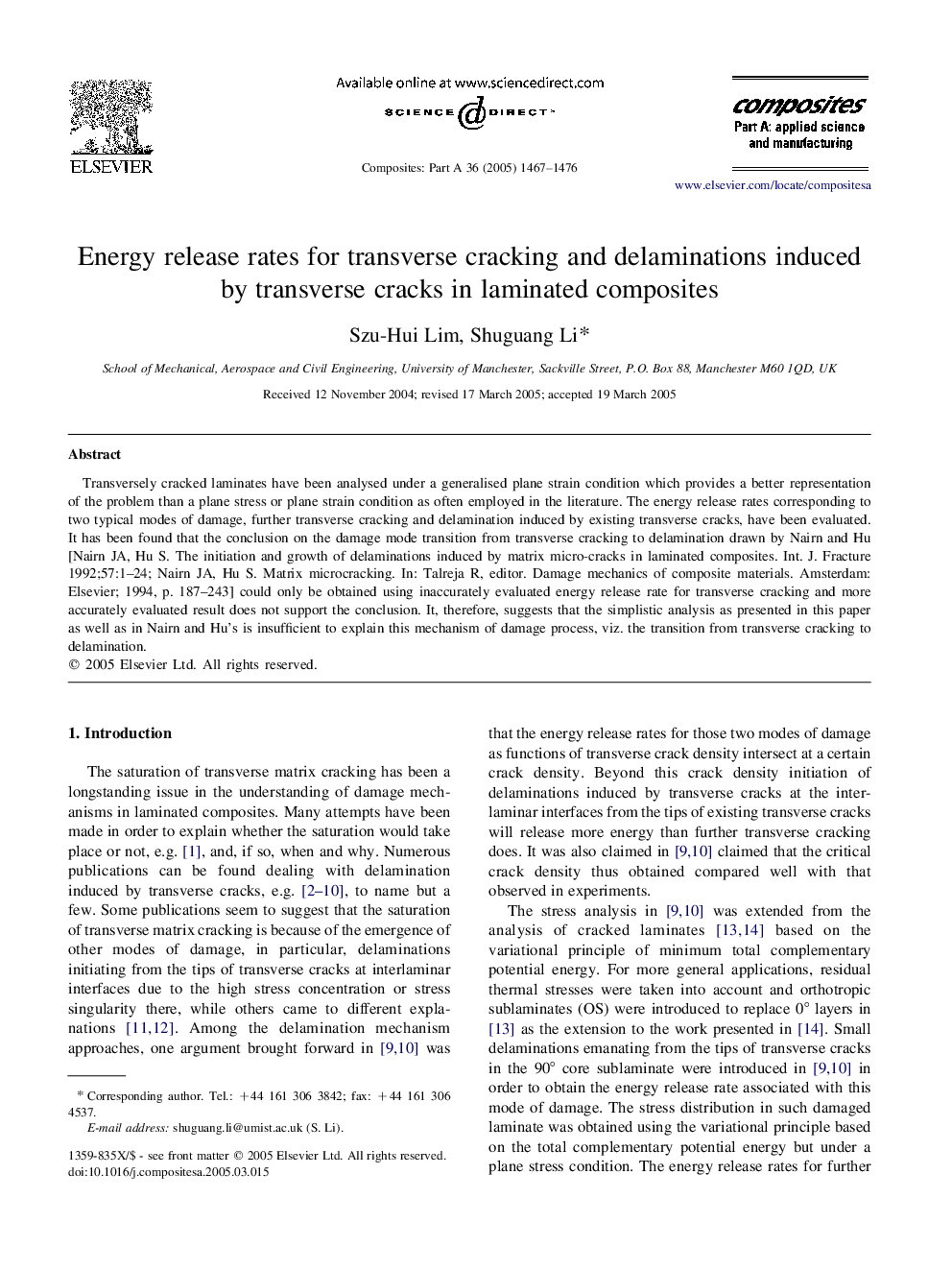| Article ID | Journal | Published Year | Pages | File Type |
|---|---|---|---|---|
| 10627743 | Composites Part A: Applied Science and Manufacturing | 2005 | 10 Pages |
Abstract
Transversely cracked laminates have been analysed under a generalised plane strain condition which provides a better representation of the problem than a plane stress or plane strain condition as often employed in the literature. The energy release rates corresponding to two typical modes of damage, further transverse cracking and delamination induced by existing transverse cracks, have been evaluated. It has been found that the conclusion on the damage mode transition from transverse cracking to delamination drawn by Nairn and Hu [Nairn JA, Hu S. The initiation and growth of delaminations induced by matrix micro-cracks in laminated composites. Int. J. Fracture 1992;57:1-24; Nairn JA, Hu S. Matrix microcracking. In: Talreja R, editor. Damage mechanics of composite materials. Amsterdam: Elsevier; 1994, p. 187-243] could only be obtained using inaccurately evaluated energy release rate for transverse cracking and more accurately evaluated result does not support the conclusion. It, therefore, suggests that the simplistic analysis as presented in this paper as well as in Nairn and Hu's is insufficient to explain this mechanism of damage process, viz. the transition from transverse cracking to delamination.
Related Topics
Physical Sciences and Engineering
Materials Science
Ceramics and Composites
Authors
Szu-Hui Lim, Shuguang Li,
